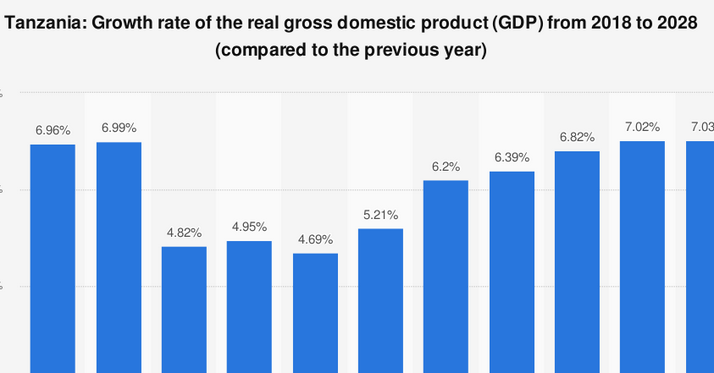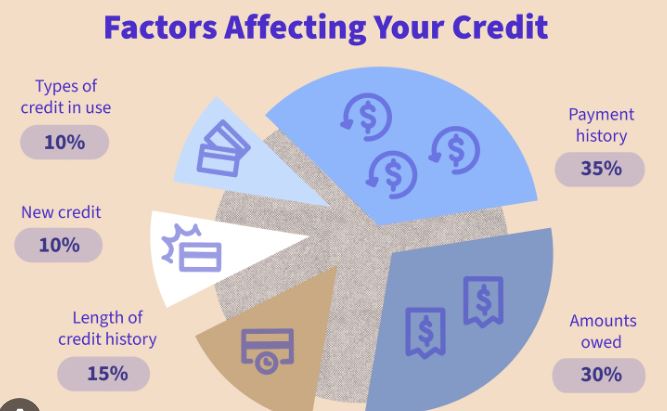Tanzania, a vibrant East African nation, has been making significant strides in recent years, particularly in the realm of Gross Domestic Product (GDP) growth. This article delves into Tanzania’s GDP growth trends, shedding light on the country’s economic journey, key contributing factors, and future prospects.

Tanzania’s GDP Growth Trends
GDP Growth Over the Years
An Upward Trajectory
Tanzania’s GDP has exhibited consistent growth over the past two decades, establishing it as one of Africa’s fastest-growing economies. The GDP, which measures the total value of goods and services produced within a country’s borders, has been on an upward trajectory, bolstered by multiple sectors.
Contributing Factors to GDP Growth
Driving Forces Behind Prosperity
Agriculture: Tanzania’s fertile land and commitment to agricultural modernization have propelled the sector, contributing significantly to GDP. Crop cultivation and livestock farming play pivotal roles.
Natural Resources: Abundant reserves of minerals, including gold and diamonds, have attracted foreign investment and driven up export revenues, boosting GDP.
Services Sector: Tourism, banking, and telecommunications have emerged as vital components of the services sector, adding substantial value to Tanzania’s economy.
Infrastructure Development
Investing in the Future
Tanzania’s government has recognized the pivotal role of infrastructure development in GDP growth. Investments in transportation, energy, and telecommunications have improved connectivity, fostered trade, and attracted investors.
Regional Disparities in GDP Growth
Addressing Regional Imbalances
While the country’s overall GDP growth is commendable, it’s essential to address regional disparities. The urban areas, especially Dar es Salaam, have experienced more significant economic growth than rural regions. Balancing development across the nation remains a challenge.
Challenges to Sustaining GDP Growth
Obstacles on the Path
Informal Economy: A significant portion of Tanzania’s economic activity remains informal and unregulated, impacting accurate GDP measurement and tax collection.
Infrastructure Gaps: Despite progress, infrastructure gaps persist, hindering seamless connectivity and trade.
Agricultural Productivity: Ensuring sustainable agricultural growth and modernization is crucial to maintaining GDP momentum.
Government Initiatives
Driving Economic Reform
Tanzania’s government has introduced various economic reforms to sustain GDP growth. These include simplifying business regulations, promoting foreign investment, and enhancing transparency in the mining sector.
GDP and Socioeconomic Development
Improving Quality of Life
While GDP growth is essential, it must translate into improved living standards for the population. Tanzania has been working on social development programs, including education and healthcare, to ensure that economic growth benefits all citizens.
The Impact of COVID-19
A Temporary Setback
The COVID-19 pandemic posed challenges to Tanzania’s GDP growth. Restrictions on travel and trade disrupted key sectors such as tourism. However, the nation’s swift response and adaptability have minimized the pandemic’s long-term impact on the economy.
The Role of Education in GDP Growth
Investing in Human Capital
Quality Education: Improving the quality of education and increasing access to it can enhance the skill set of the workforce, contributing to higher productivity and economic growth.
Vocational Training: Promoting vocational and technical training programs can align the labour force with the demands of the job market, boosting GDP.
Trade and Export Diversification
Expanding Global Reach
Export Promotion: Encouraging the diversification of exports beyond minerals and agricultural products can reduce vulnerability to commodity price fluctuations and stimulate GDP growth.
Regional Integration: Strengthening regional trade agreements and partnerships can open up new markets and opportunities for Tanzanian businesses, fueling economic expansion.
Infrastructure Connectivity
Bridging Gaps for Growth
Rural Infrastructure: Focusing on infrastructure development in rural areas can reduce regional disparities and stimulate economic activities outside urban centres.
Digital Infrastructure: Expanding access to reliable internet and digital services can unlock new avenues for innovation and business growth, boosting GDP.
Sustainable Development and Conservation
Preserving Natural Wealth
Environmental Sustainability: Implementing sustainable practices in industries like mining and agriculture can protect Tanzania’s natural resources, ensuring long-term economic viability.
Tourism Potential: Promoting eco-tourism and responsible tourism practices can harness the potential of Tanzania’s diverse landscapes and wildlife, contributing to GDP.
Private Sector Growth
Empowering Entrepreneurship
Supporting Small and Medium Enterprises (SMEs): Creating an enabling environment for SMEs to thrive can foster entrepreneurship, create jobs, and stimulate economic growth.
Access to Finance: Improving access to credit and financial services for businesses can fuel investment and expansion, further boosting GDP.
Global Economic Trends
Navigating Global Challenges
Global Economic Shocks: Tanzania’s ability to adapt to global economic fluctuations and shocks is crucial for sustaining GDP growth.
Foreign Direct Investment (FDI): Attracting FDI and mitigating investment risks are essential for capital inflows that drive economic expansion.
Conclusion
In conclusion, Tanzania’s Gross Domestic Product growth trends reflect its commitment to economic progress and prosperity. With a diverse economy encompassing agriculture, natural resources, and services, the nation has managed to maintain an upward trajectory. Addressing regional disparities, overcoming challenges, and focusing on sustainable development is key to ensuring that the benefits of GDP growth reach every Tanzanian citizen. As the nation continues its journey of economic transformation, the future looks promising, holding the promise of a brighter economic horizon for Tanzania and its people.




